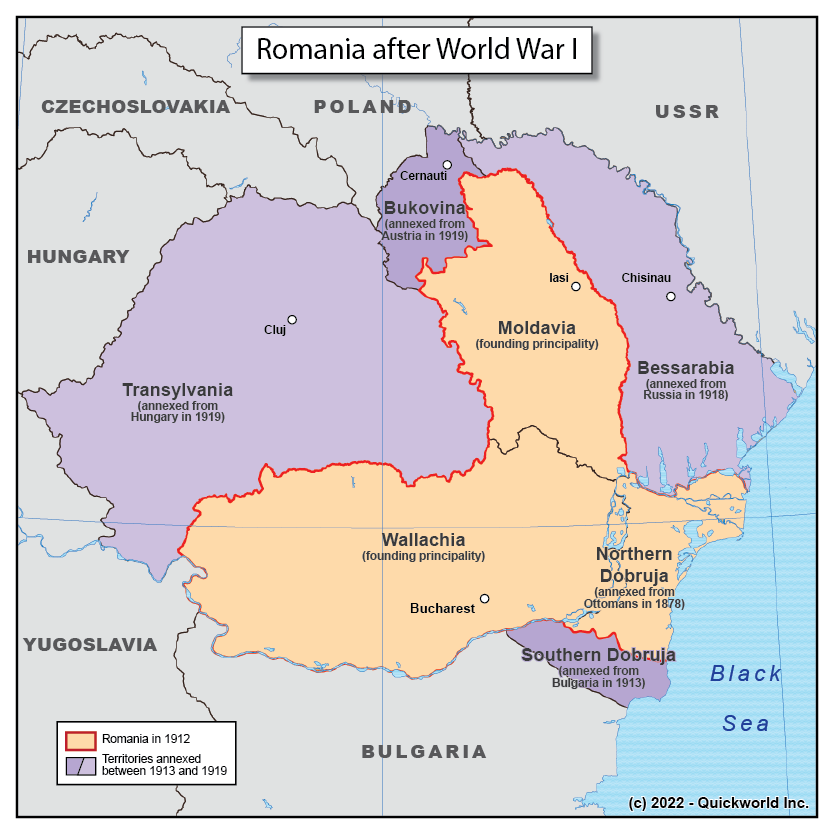Our Series on World War I leads us to focus on Romania, one of the nations that gained the most territory in the post-war treaties.
Romania took advantage of the collapse of Tsarist Russia to annex Bessarabia, a region predominently settled by Romanians, but that had fallen under Russian sovereignty in the 19th Century. It also gained from the Austrian Empire by annexing Bukovina, a region of mixed German, Ukrainian, Romanians and Jewish populations.
The greater gain, however, came from the Treaty of Trianon, which settled the borders of Hungary. In this treaty, the totality of Transylvania, as well as the eastern half of Banat, were transferred to Romania. While those had a Romanian majority overall, there were large pockets of Hungarian and German speaking populations, which ended up poisoning the relationship between Romania and Hungary and led the latter to re-annex major swaths of Transylvania during World War II, though those lands were recovered by Romania again in 1945.
More on Romania
Romania's WW1 Territorial Gains


